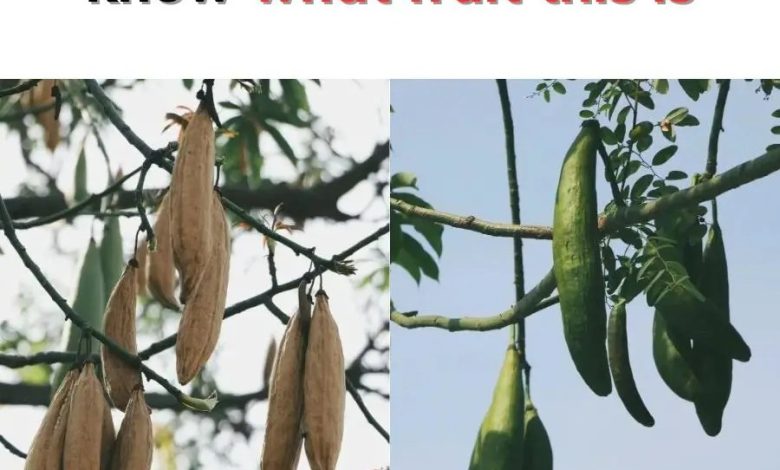
Recently, a certain fruit has been making the rounds on social media, baffling many adults who have no idea what it could be. It looks strange, a bit like something out of a fantasy book, and has sparked curiosity everywhere. Spoiler alert: it’s the fruit of the kapok tree!
The Kapok Tree – Nature’s Hidden Wonder
The kapok tree, also known as Ceiba pentandra, isn’t something you’ll typically find in your neighborhood orchard. It grows in tropical climates, particularly in Central and South America, Southeast Asia, and parts of West Africa. This towering giant, sometimes reaching over 200 feet tall, is known for its majestic presence, but it’s the fluffy white fiber inside its pods that tends to grab most people’s attention. However, the tree also bears a fascinating fruit, which many people aren’t aware of.
What Does the Fruit Look Like?
The kapok fruit isn’t exactly what you’d expect when you hear the word “fruit.” It has a long, somewhat oval shape with a rough, brown exterior. Inside the pod, there’s a dense network of silky fibers, known as kapok, which helps protect the seeds. This fluffy material resembles cotton and is often used as stuffing for pillows and mattresses. The seeds themselves are small and dark, embedded in the white fiber.
What’s truly remarkable about this fruit is its role in nature and human use. The kapok fiber is naturally buoyant, resistant to water, and was historically used in life jackets. Today, it’s also used as eco-friendly stuffing in various products.
Why Don’t People Recognize It?
You may wonder why many adults can’t identify this fruit. The answer lies in its rarity in everyday life. Unlike apples, bananas, or oranges, kapok fruit is not grown for mass consumption. In fact, it’s not cultivated for its flavor at all—it’s the fiber that interests humans most. The fruit itself isn’t commonly eaten, and kapok trees aren’t typically grown in regions where they are easily accessible to the average person.
Moreover, kapok trees are massive and often found in rainforests or along roads in rural areas. Unless you’ve traveled to regions where these giants thrive or studied tropical flora, it’s unlikely you’ve come across one, let alone the fruit it produces.
A Cultural Gem
In places where the kapok tree is native, it has significant cultural importance. Many cultures consider the kapok tree sacred. In parts of Central America, it’s even referred to as the “tree of life” because of its impressive size and the many benefits it provides to the ecosystem. It plays a role in traditional medicine as well, where various parts of the tree are used for treating ailments ranging from fevers to skin issues.
The kapok tree also serves as a critical habitat for wildlife. Its tall branches are home to birds, bats, and insects. The fiber from its fruit allows the seeds to be dispersed by the wind, ensuring the kapok tree continues to spread across the tropical landscape.
Fun Facts About the Kapok
- Natural Buoyancy: The kapok fiber’s buoyant property made it highly valuable during World War II for use in life vests.
- Eco-Friendly Material: Today, kapok fiber is considered an eco-friendly alternative to synthetic stuffing materials, perfect for anyone looking to avoid plastics.
- Wildlife Haven: The kapok tree provides nesting places for various bird species, making it a favorite in diverse tropical ecosystems.
Why You Should Know About the Kapok Tree
Even if the kapok fruit isn’t about to become the next trendy superfood, it’s worth learning about because of its environmental significance. The kapok tree supports diverse ecosystems and provides useful resources without causing harm. It reminds us that not every remarkable plant needs to be edible or cultivated for human consumption to be valuable.
Next time you come across an image of this curious fruit, you can smile knowing that you’re one of the few who can identify it. The kapok tree may not produce a juicy snack, but its contributions to the world go far beyond what we find on our plates. From keeping your head comfy at night to playing a part in rainforest biodiversity, the kapok tree deserves a little recognition.







